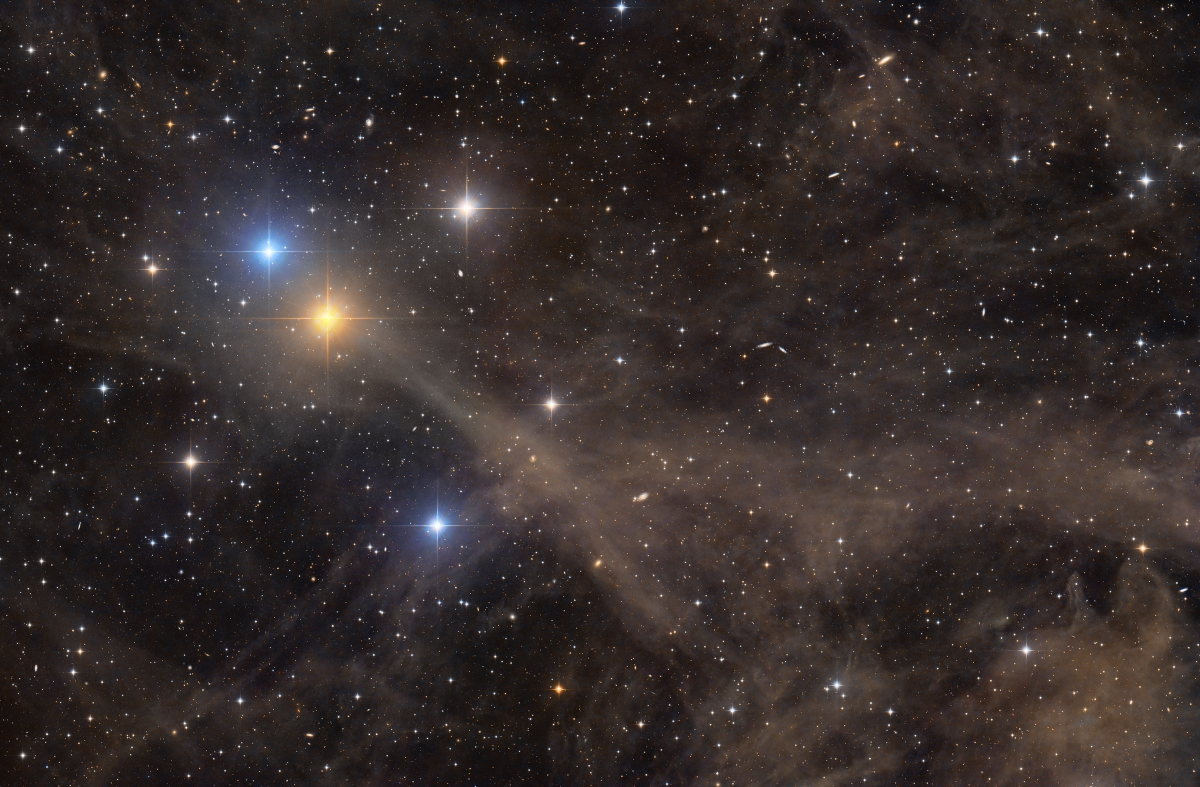
[back] 14 Aqr with MBM 46/47/48 (Heart of the Pentagon) in Aquarius
Higher resolved image / höher aufgelöstes Bild (5505 x 3612 Pixel)

|
(c) 2023 All astro photo images are copyrighted. They may not be used or reproduced without explicit written permission from the authors. |
|
300" |
|
About this Image / Über dieses Bild
| CCD: | Omegon veTEC410c |
| Image Type, Orientation: | RGB Composite, North is at 12:00h |
| Exposure time: | RGB: 70x300s (05:50h total) |
| Exposure date: |
October 9th/10th/16thr 2023 |
| Location: | Capella Observatory at Skinakas, Crete/Greece,robotic (with babysitting from Bad Arolsen/Germany) |
| Filter: | RGB: Internal Bayer-Matrix |
| Instrument: | Ganymed 60cm-Hypergraph in primary focus (f=1840 mm) |
| Photographer: | Josef Pöpsel, Frank Sackenheim, Stefan Binnewies |
|
Remarks: |
The
constellation of Aquarius is largely avoided by astrophotographers. Although
the rather bright and large Helix Nebula, NGC7293, is located in Aquarius,
other spectacular deep-sky objects are rarely found in this region of the
sky. In the western part of the constellation, on the border with the
constellation Aquila, there is a large complex of gas and dust. These dark
clouds are generally referred to as the Galactic Cirrus. In the mid-1980s,
astronomers Magnani, Blitz and Mundy observed and cataloged the galactic
cirrus. They cataloged 57 individual molecular clouds, which are divided
into 35 nebula complexes. The nebulae shown here in the image belong to
complex 28 with the catalog numbers MBM46, 47 and 48. |
|
Bemerkungen: |
Das Sternbild Wassermann wird von
Astrofotografen weitestgehend gemieden. Zwar befindet sich der recht helle
und Große Helixnebel, NGC7293 im Wassermann, doch weitere spektakuläre
Deep-Sky Objekte findet man in dieser Himmelsregion eher selten. Im
westlichen Teil des Sternbildes, an der Grenze zum Adler, befindet sich ein
großer Komplex aus Gas und Staub. Allgemein werden diese Dunkelwolken als
Galaktischer Zirrus bezeichnet. Mitte der 1980er Jahre haben die Astronomen
Magnani, Blitz und Mundy den galaktischen Zirrus beobachtet und
katalogisiert. Dabei haben sie 57 einzelne Molekülwolken katalogisiert, die
in 35 Nebelkomplexe eingeteilt ist. Die hier in der Aufnahme gezeigten Nebel
gehören zum Komplex 28 mit den Katalognummern MBM46, 47 und 48. |
Back to the Diffuse Nebulae Overview / Zurück zur Diffuse-Nebel-Übersichtsseite